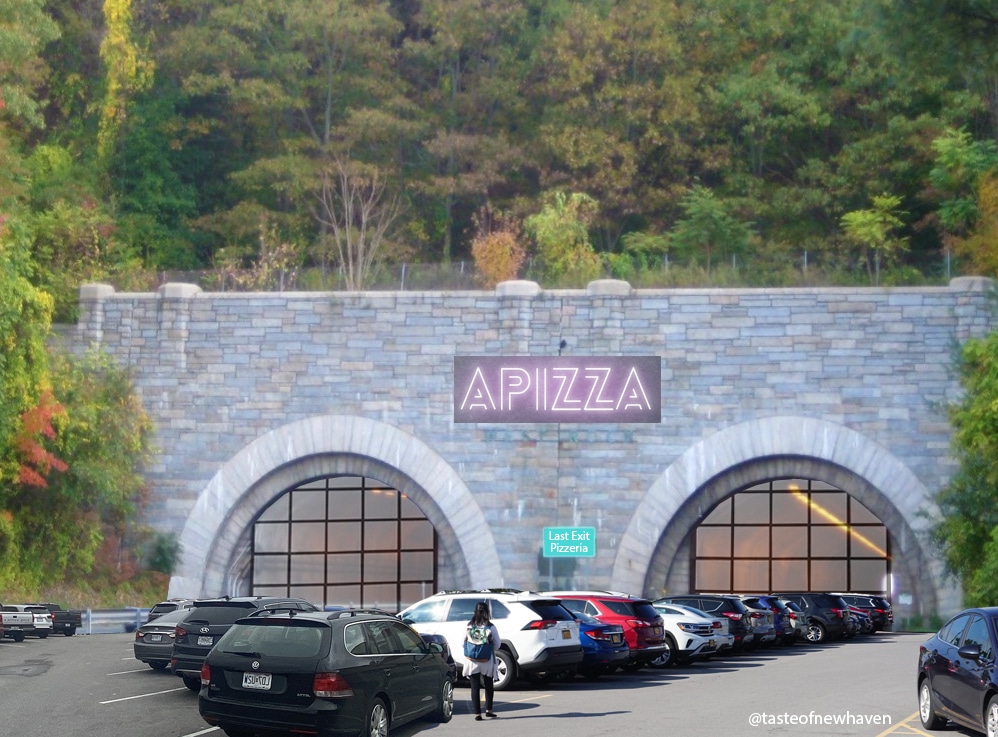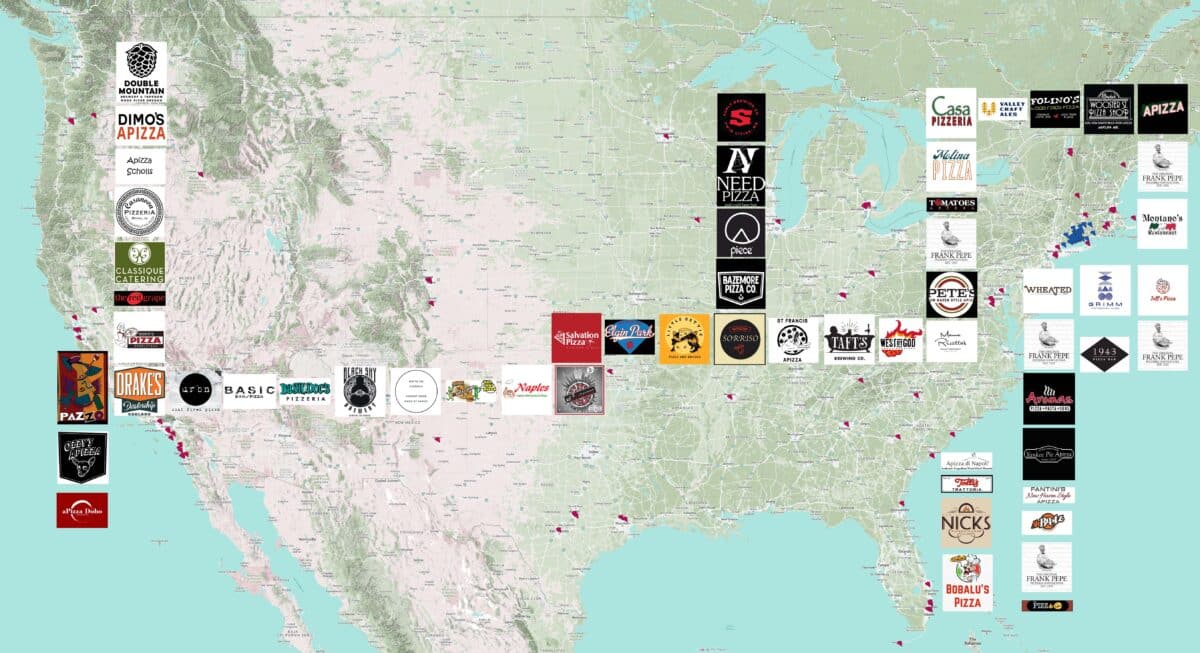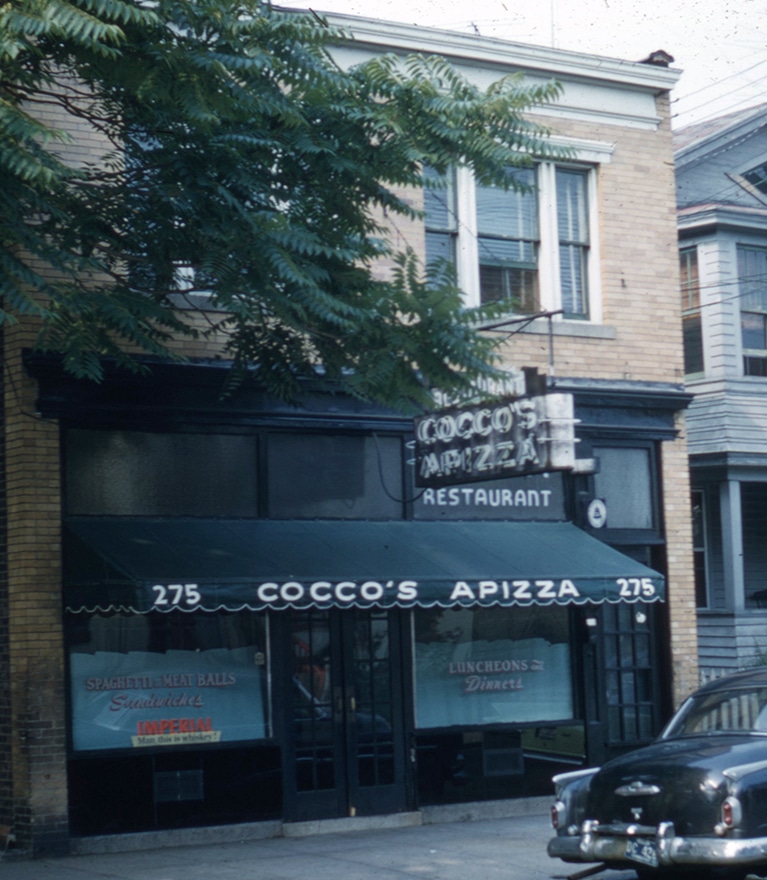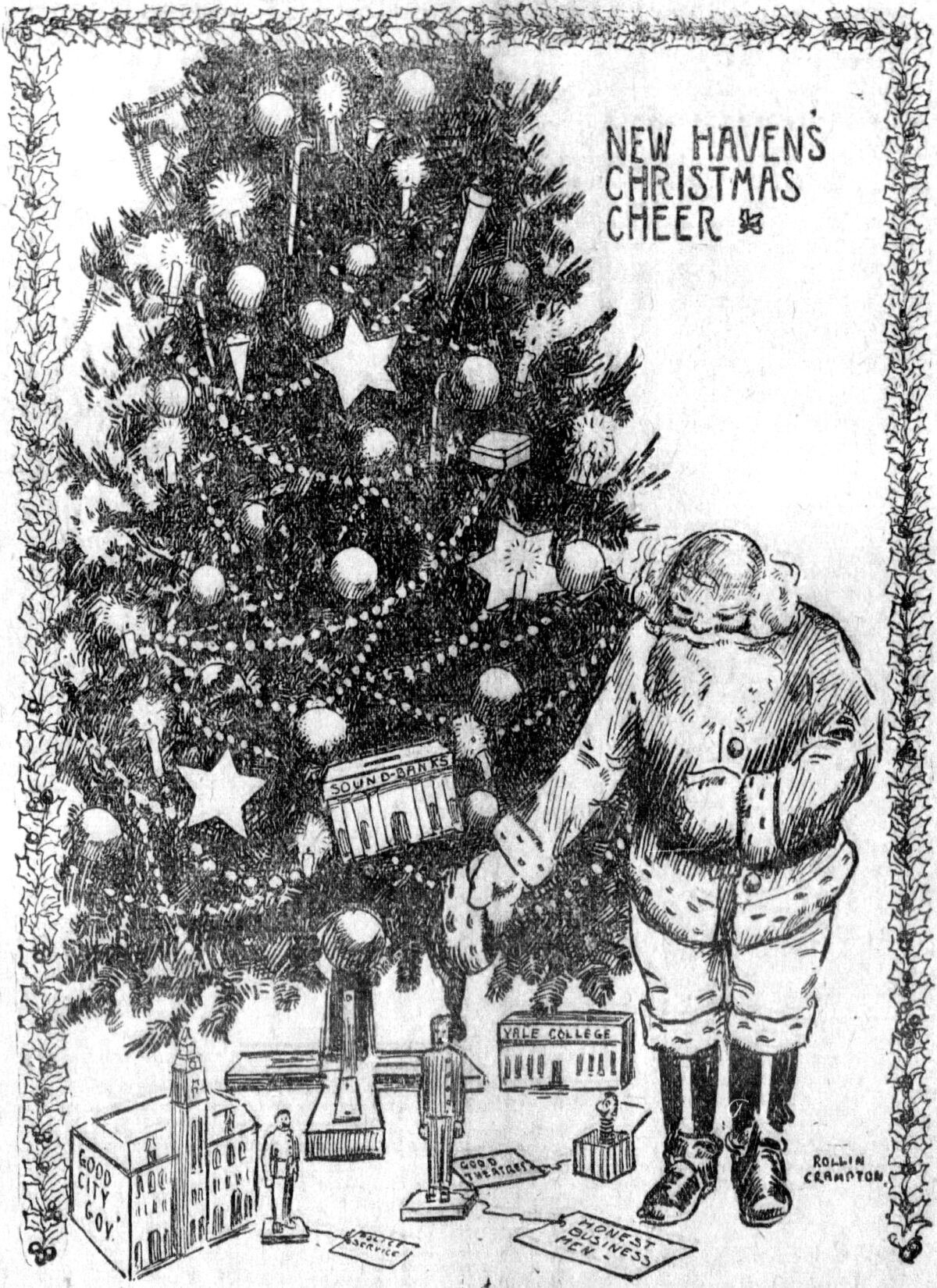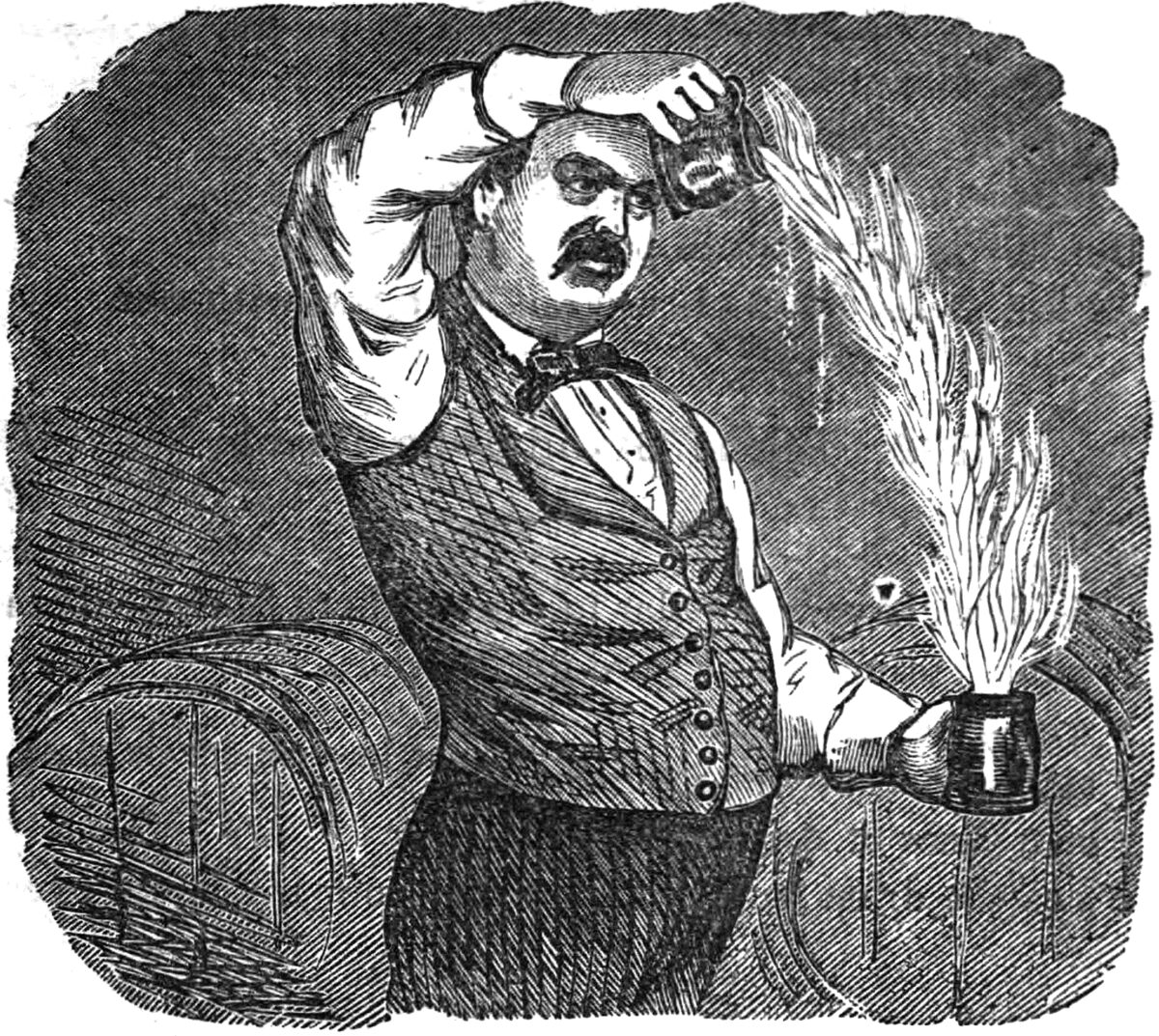World’s Largest Pizzeria Proposed Inside New England’s Only Tunnel
Associated Pizza Press
July 3, 2023
NEW HAVEN, CT. A groundbreaking proposal to convert the entire West Rock Tunnel along Connecticut’s Wilbur Cross Parkway in New Haven into the world’s largest pizzeria is steaming its way into a huge traffic jam as state regulators and so-called pizza-preneurs spar over what could become a gargantuan rest stop. The concept has put to the test the state’s ability to consider an alternate idea to this well baked idea fully fueled by its enthusiasts.
At the core of what is planned to be called Final Exit Pizzeria is pizza evangelist and entrepreneur Colin M. Caplan and his cadre of spirited investors. Caplan founded the controversial Church of Pizza which sees this popular food as a deity of sorts. His otherwise unorthodox idea was spurned by crunching a number of transportation data statistics leading to a demand for a major overhaul of this poorly functioning highway.
“Traffic has been at a standstill for years and current plans to enlarge the tunnel or limit access to the highway have been poorly received and are way over budget,” Caplan stated on Monday. “The idea for this temple to pizza began when we studied the schematics of the original tunnel, which is actually two tubular archways built in 1948-49 in order to smoothly bypass West Rock Ridge State Park. Back then there were less cars and the Wilbur Cross Parkway was more of a leisure roadway rather than part of an interstate network of travel weary commuters and families rushing to vacation homes.”
As New England’s only highway tunnel through a natural feature, the West Rock Tunnel, also known as Heroes Tunnel, was never designed to be enlarged or drastically changed. The challenges of increased car traffic through the tunnel have put a strain on the Department of Transportation’s resources.
“We looked at everything from boring a new tunnel to combining both tunnels into one, creating an alternate route and even clearing the whole mountain,” explained state DOT regional acting deputy planner Caprice McAdam. “We just couldn’t drive any of these ideas home. It was as if the blasted rock wanted us to stop sending cars through it,” noted McAdam.
With no feasible alternate plans in the works, Caplan began cooking up a far-fetched idea to abandon the highway here altogether. “Highways are meant to provide quick access to distant points, but when that system begins to fail, we need to ask why we need these dangerous, stress-filled pollution corridors in the first place.” Caplan conceded.
“I want people to just get off the highway here in New Haven and explore. If you want to just pass through town then take a one of the interstates. What we do best here is pizza,” argued Caplan.
“That’s where the concept of reuse began. We’ve all heard of abandoned mines being used for storage and even habitation, but we never stopped to think about how we could use a highway tunnel differently. The tunnel is a sanctuary and should be appreciated as such.”
So Caplan, along with a panel of adaptive reuse experts from Texas, West Virginia and Atlantis, began to devise a best-use plan for the space. The result was to propose one massive pizzeria utilizing the outer naturally lit portions of both tunnels for dining spaces, while the innermost areas would be dedicated for banks of restrooms, food prep and storage, staff locker rooms, offices and 20 colossal coal-fired pizza ovens. This plan is so well-cooked that it accounts for the dire need of vast vehicular parking spaces by utilizing the former highway approaches to the tunnel which had formerly been so backed up by traffic, they were already parking lots. Caplan’s lead engineer on the project, Abel Block of Block Builders, agreed.
“This tunnel is open territory. It’s two 1200-foot long, 28-foot wide, 20-foot tall reinforced concrete tunnels totaling 67,000 square feet of usable space. This megastructure was even designed with a massive ventilation shaft like a chimney to remove toxic air. You can’t ask for a better situation to house a series of coal-fired pizza ovens and provide a dining experience for over 3000 people. From an engineering perspective, it’s a gold mine,” Block asserted.
With a pizzeria this large in the city dubbed the Pizza Capital of America, the demands for restaurant supplies will be overwhelming. On any given day this pizzeria’s 20 ovens would be pumping out a whopping 15,000 pizzas and consuming roughly 100 tons of anthracite coal. While many would argue against having this level of coal soot and pollution deep within the second largest state park, a deal in the works with the country’s only commercial coal mine is positioned to help keep this archaic nugget out of power plants.
“We are still catching up after the new millennium here in Scranton, PA. We recognize that coal has gotten a bad rap, especially with people who read the news and just see black smoke coming out of power plants and assume it’s toxic. But I always told them if you want to keep the lights running and the beer cold in the fridge, then you need this here coal,” explained 8th generation coal mine owner Rip Moreland of Moreland Processing in Carbondale, PA.
But not everyone is fired up about this idea. Connecticut’s transportation czar Peter Dowt has been leading the charge to stop the closure of the parkway.
“Over 77,000 cars pass through the tunnel daily. You’d have to be an actual lunatic to think we are going to find an alternate route for all these cars,” Dowt said. “The Wilbur Cross is a major artery in the state’s transportation system. If you block it up with cheese, sauce and toppings the whole system will explode.”
Dowt is not alone in his protest. Daisy Fernandez heads the conservation group Friends of Fronds who has been concerned about the impact of increased activity at West Rock Ridge State Park. “It’s one thing to have millions of cars per year pass under this wildlife sanctuary, but it’s another thing entirely to have smoke from coal burning ovens and thousands of people occupying the middle of the mountain. Add in the off-gassing from making thousands of pizzas per day, this will be the perfect storm for an environmental meltdown. I do eat a lot of pizza because I am vegetarian.”
Connecticut State Geologist Crystal Giodde confirmed that the rock structure of West Rock Ridge is a sensitive natural area teeming with wildlife and history. “The earth’s crust is a lot like a pizza cooking in a coal-fired oven. Looking back in time, West Rock was formed as a magmatic dike formation deep underground during the Jurassic period, a fissure between two softer substrates of sandstone. It’s full of iron and turns orange and red when exposed to oxygen. If this new place makes the pizza anything like they do down on Wooster Street, it’ll be a seismic event.”
As Caplan’s plan gets set in stone and with pen as chisel he is carving a name for himself in the pizza world. He asserts that the West Rock Tunnel conversion to pizzeria is as solid an idea as any.
“I hear all the concerns about the highway closure and I say we’ll cross that road when we get there. But everyone loves pizza, and nobody likes highways. This group of esteemed pizza parishioners are equipped to convert this tunnel to a higher use. We are a well-oiled machine, and at this point, we are on fire.”
Written in satire by Colin M. Caplan July 3, 2023



